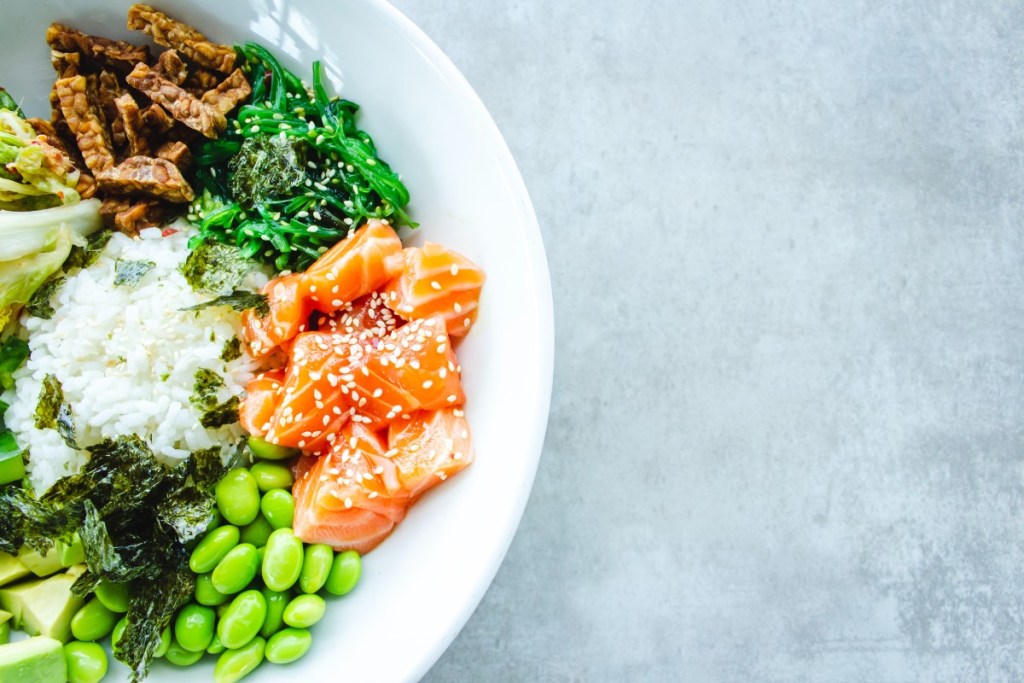The internet is full of fad diets (hello, Keto and Paleo). However, when it comes to nutrition plans, the Mediterranean diet sets the gold standard: The U.S. News & World Report ranked it as the best diet in 2019.
This diet encourages eating whole foods like nuts, whole grains, legumes, and fresh produce while limiting the intake of red meat, sugar, and saturated fat. People who follow this plan closely have lower risks of heart disease and stroke, and may even see their brain functioning as if it were 5.8 years younger, with improved memory, focus, and overall cognition.
However, the westernized version of the Mediterranean diet may actually do more harm than good. A new study found that adults who added red and processed meats, fried foods, and full-fat dairy to this meal plan were at risk for a faster cognitive decline. Luckily, with a few small tweaks, you can get back on track, so consider this your guide to clean eating on the Mediterranean diet.

Mediterranean diet foods
Unlike other meal plans, there’s not an “official” Mediterranean diet. This is why it’s easy for followers to accidentally load up on foods that don’t quite align with the plan. However, there are a few basic principles to follow when setting your menus for the week.
Fruits and vegetables are all on the table, so load up on leafy greens, broccoli, lettuce, zucchini, apples, berries, avocados, citrus fruits, and more. Top salads with healthy fats like olive oil and nuts, and get your carb intake from whole grains like whole-wheat toast and brown rice.
Legumes, such as beans and chickpeas, are a primary protein source when following this meal plan, but that doesn’t mean you need to convert to veganism. Fish, eggs, lean white meat, and low-fat and non-fat dairy are all staples of this nutrition plan.
Why the Mediterranean diet works
Besides lowering the risks of poor health outcomes such as Alzheimer’s Disease and heart attacks, the Mediterranean diet is beneficial because it’s one of the easiest to follow. It doesn’t ask followers to cut fats entirely or count calories. Instead, it focuses on one’s intake of healthy fats and complex carbs, which promote good digestive health.
In other words, you’re not depriving yourself but fueling your body with nutritious foods that keep you physically and mentally energized. Additionally, the foods are accessible, so there aren’t any hard-to-find ingredients you can only purchase at specialty stores.
The diet works best by making simple switches and exchanging high-fat, processed foods for lighter alternatives. For example, on your next salad, top it with salmon, shrimp, or chickpeas instead of steak, and ask for olive oil instead of full-fat dressing. To cut down on oils and fried food, request a side salad with your sandwich instead of chips or fries. When it comes to dairy, stick with skim or 2 percent milk, and grab a Greek Yogurt without added sugar. The fruit-on-the-bottom varieties are typically full of sugar, so consider adding your own fresh fruit instead.
These few small tweaks can make a large difference to your health and the efficacy of this diet.

The Western effect on the Mediterranean diet
Restaurants in the West have put their own twists on Mediterranean dishes, reducing many of the benefits. This often looks like a Greek salad topped with steak and loaded with full-fat feta. Ringing any bells? The results are delicious but not necessarily light and healthy. Pizza is also “technically” a Mediterranean dish, but it’s not the world’s most nutritious dinner option either. If you’re a pizza lover, try some popular, healthier alternatives, like chickpea-crust pizza.
Though a steak every once in a while is fine, eating a diet high in red meat triples your risk for heart disease, and eating too much sugar is also a contributing factor to cardiovascular issues. Excess consumption of red and processed meats and fried foods also contributes to cognitive decline and inflammation, so true Mediterranean dieters limit their intake of all of these ingredients.
The Mediterranean diet is a heart-healthy plan that also reduces your stroke risk and keeps your brain young. Unfortunately, the Western world has made following this diet a bit more difficult by adding excess red meat and fried foods to traditional Mediterranean meals and snacks. Keep in mind that just because a Greek restaurant serves something doesn’t mean the food is healthy, so take your diet into your own hands and customize a meal that’s full of protein, mono-saturated fats, and tons of fresh produce. Happy eating!
However, if you are looking for other types of diets, check out this amazing guide on the Whole30 fad diet or clever meal plan, and its benefits.
BlissMark provides information regarding health, wellness, and beauty. The information within this article is not intended to be medical advice. Before starting any diet or exercise routine, consult your physician. If you don’t have a primary care physician, the United States Health & Human Services department has a free online tool that can help you locate a clinic in your area. We are not medical professionals, have not verified or vetted any programs, and in no way intend our content to be anything more than informative and inspiring.



